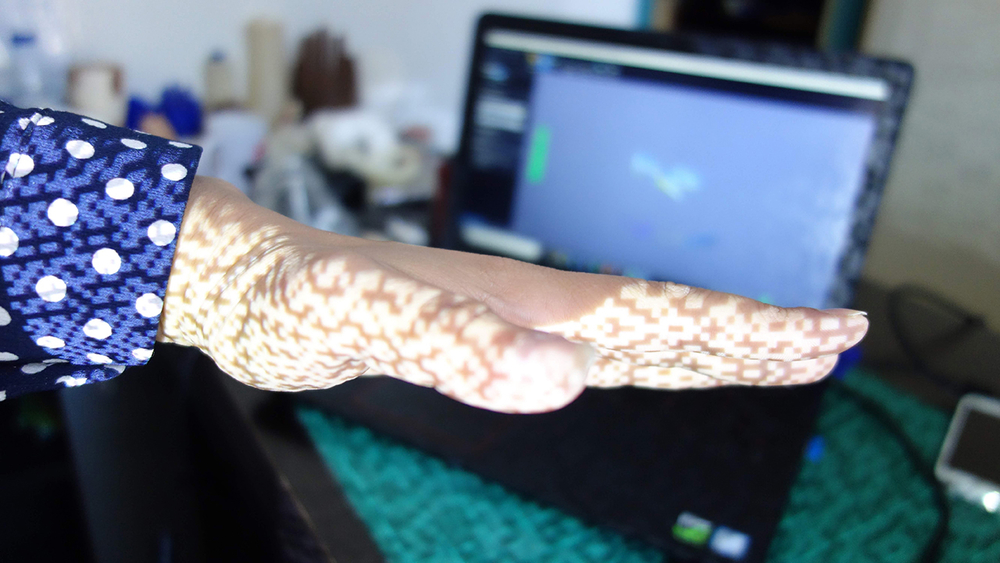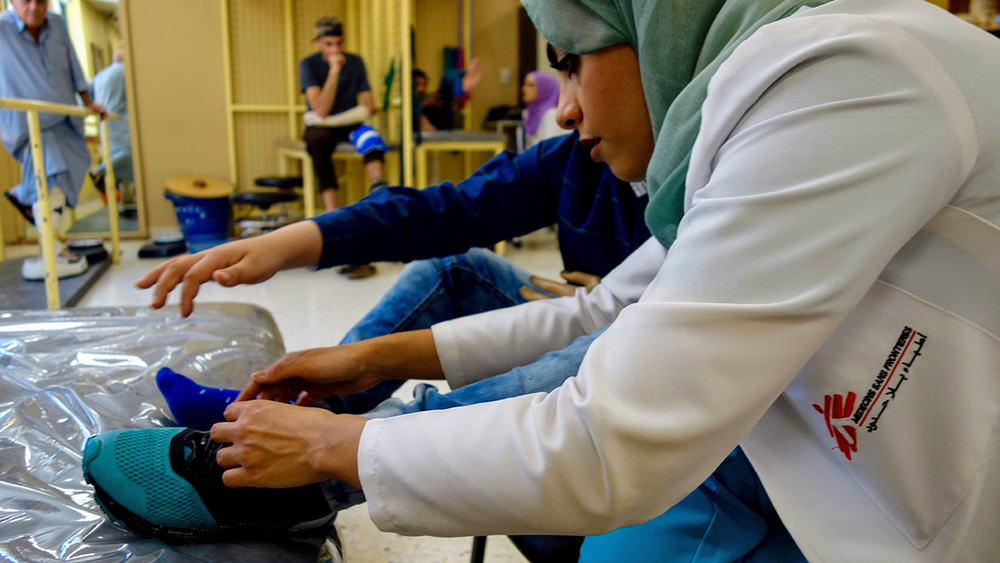Approximately 86,000 Syrians have lost limbs during the last seven years of war in their country, according to the World Health Organization and Handicap International (now known as Humanity & Inclusion). In Jordan, which borders on Syria, the Médecins Sans Frontières (MSF) Foundation is working to bring 3D printed prosthetics to as many of those people as possible, as well as to patients from Jordan, Yemen and Iraq. Some of these patients have congenital conditions, but many of them have been wounded in the war.
The MSF Foundation initiated the program in 2016, and this year has been focusing more on field testing the devices in the real world.
“We see it as our duty to bring scientific evidence to what remains until now, a feeling,” said Director Clara Nordon.
The $150,000-per-year program is working to provide better alternatives to conventional prosthetics, which can be clunky, heavy, and uncomfortable. 3D printing offers more lightweight, well-fitted devices that can be easily upgraded or replaced as children grow, and can be made in appealing colors or patterns. The program is also seeing success at using 3D printing to make face masks to help burn patients heal.
 The ability to easily create perfectly customized prosthetics that fit each individual patient is an often-touted benefit of 3D printing, but according to Nordon, more credit should be given to 3D scanning technology.
The ability to easily create perfectly customized prosthetics that fit each individual patient is an often-touted benefit of 3D printing, but according to Nordon, more credit should be given to 3D scanning technology.
“Now what is really a breakthrough is not so much the printer but rather the scanner!” she said. “It opens hundreds of leads to optimise tele-expertise, remote advice, and actual remote designing.”
Imagine that – professionals being able to design and create custom prosthetics for patients without ever actually having to be in the same room – or country – as them. This enables experts from across the world to weigh in on treatment – which is not to take anything away from the dedicated individuals actually present in clinics like the one in Jordan, but allows them to take advantage of a full range of expertise that may not be available in person.
The MSF Foundation is not the only organization hard at work to provide prosthetics to people affected by war. The International Committee of the Red Cross (ICRC) provided prosthetics to more than 22,000 conflict-affected people in 2016, and has been developing and field testing 3D printed prosthetic components. ICRC’s Innovation Lead, Nan Buzard, cautions against getting over-excited about the technology, however. There’s certainly plenty to be excited about, but many people don’t realize how much regulation is required before 3D printed prosthetics can be more widely implemented. Many countries require assistive medical devices to pass international certification.
In addition, most 3D printed prosthetics have been hands and arms; while plenty of people benefit from upper-limb prosthetics, there are still many, many others who have lost legs or feet. In fact, 95 percent of ICRC’s amputee patients have lost all or part of their lower limbs. Lower limb prosthetics must be stronger than upper limb prosthetics, as they must bear the weight of the body, and thus are more difficult to create using 3D printing. 3D printing materials are evolving and becoming stronger, making 3D printed lower limb prosthetics more feasible, but developing them is still much more challenging than creating 3D printed hands and arms.

Occupational therapist Noor al-Khatib teaches a patient how to tie his shoelaces with only one hand.
Handicap International has tested 3D printed sockets on patients with below-the-knee amputations in Madagascar, Syria, and Togo. Costs were higher than conventional prosthetic methods, although the MSF Foundation has reported deep savings on 3D printed prosthetics. Feedback from patients was positive, however, and according to Handicap International, the sockets met structural and medical requirements. Several issues still need to be evaluated, the organization states, including a review of technical training needs; cost of raw materials and workshop space; costs of scanners and printers; and speed and effectiveness of fittings.
For all of the issues that still need to be addressed, though, there’s no denying the effect that 3D printed prosthetics have had on people in need. Violence across Syria and other countries continues to take lives and severely impact others, but losing one or more limbs, while life-changing, doesn’t need to be life-ruining.
Discuss this and other 3D printing topics at 3DPrintBoard.com or share your thoughts below.
[Source: IRIN/Images: Ben Parker]



137 Replies to “ 3D Printed Prosthetics To Offer Hope to People in War-Ravaged Countries”
Comments are closed.